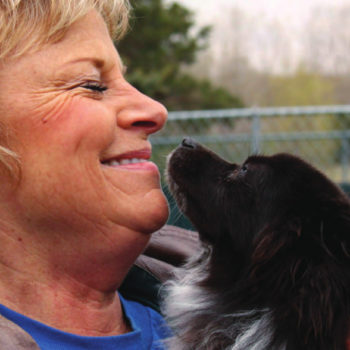Who is in the best position to know what type of home would be best for a pet in a foster home: the adoption organization, or the foster caregiver?
It’s a question that might not have a single answer. Some foster caregivers may prefer to be involved with pets but not be comfortable working directly with potential adopters. Others, however, might feel very strongly about a pet they’ve lived with and the new home it will go to. And adoption groups themselves may want adoptions to be conducted through their organization or inside its facility, particularly when the pet has not yet been spayed or neutered.
Innovations such as ASPCAPro’s Adoption Ambassadors program, however, are challenging that paradigm. Their research found that the return rate for pets adopted through the foster caregiver was 2 percent for one shelter’s foster homes and 7 percent for the other, while for adoptions done directly by the shelters in the study, the return rates were 14 and 17 percent, respectively.
Additionally, adoptions done through fosters seem to be reaching adopters who were not likely to have visited the shelter and may have gotten their pet in another way had they not engaged with the pet and their foster caregiver. While over half the adopters at the shelter itself had adopted before, less than one-third of those adopting from the foster caregiver had done so.
During the summer of 2014, Maddie’s Institute® conducted a survey to identify practices that were successful in shortening length of stay, or prevented the pets from entering the shelter entirely. One of the areas we investigated was how organizations use and work with foster homes. We asked about how groups handle the involvement of their foster homes, and specifically, who makes the final adoption decision.
Very few organizations give foster caregivers complete control over the adoption process, with support:
- 15 percent for organizations handling both dogs and cats
- 11 percent for organizations that handle only dogs
- 9 percent for organizations that handle only cats
Those figures are not too far off from the number of organizations that don’t give their foster caregivers any say in the adoption process whatsoever:
- 13 percent for organizations that handle both dogs and cats
- 7 percent for organizations handling only dogs
- 4 percent for groups handling only cats
The remaining organizations describe their approach as a partnership with the foster caregiver, but with the organization having the final say:
- 65 percent for dog and cat organizations
- 73 percent for dog-only
- 84 percent for cat-only
Interestingly, between 19 and 23 percent of people surveyed agreed with the statement, “I think foster caregivers should be given complete control over the adoption process from start to finish, with organization support,” suggesting policy and belief are not currently well-aligned on this issue.
For an in-depth look at all the data, including how it differs between type and size of organization, visit “Community Pet Adoption Partnership Survey Results: February 2016.”
Don’t miss more innovative ideas for pet fostering, adoption, shelter medicine and stories about how pets make our lives better and happier — sign up here!

